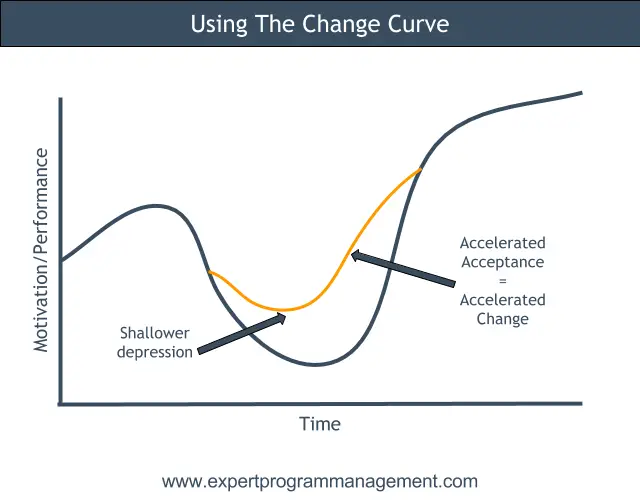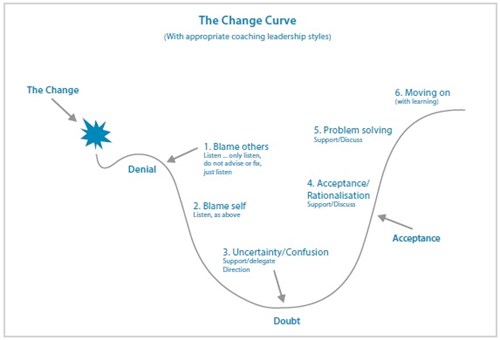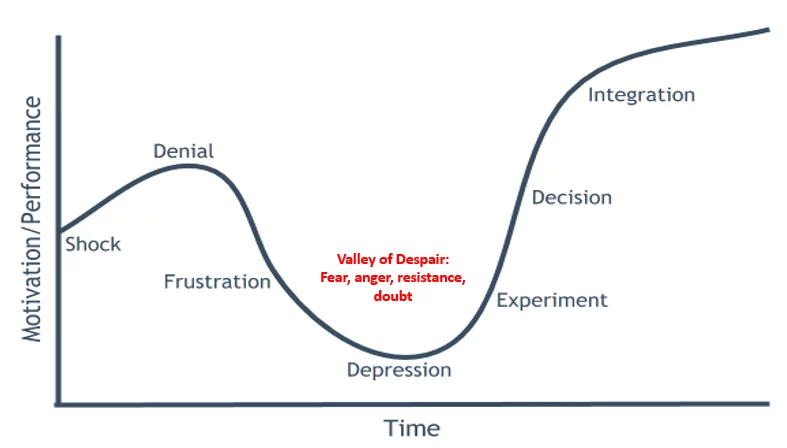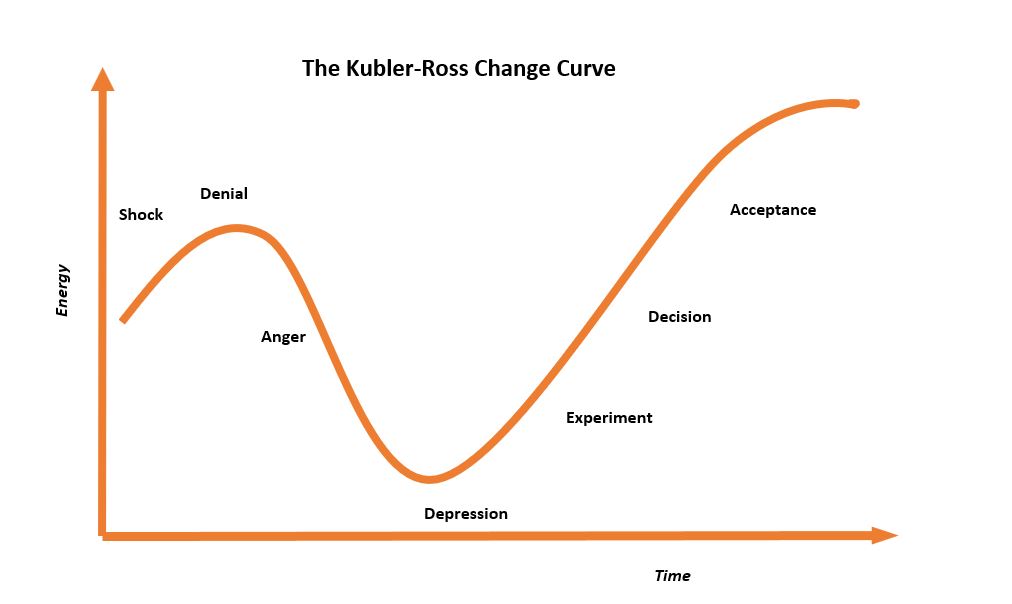The Change Curve

At this stage handle all the emotions.
The change curve. Knowing the v curve is a normal part of change makes a change easier to handle and reduces resistance guilt and blame. The change curve is a very useful tool for church leaders to help people understand the nature of individual team or organizational change. The change curve was originally created by elisabeth kubler ross in 1969 to illustrate how people deal with the news that they have a terminal illness. It was originally developed in the 1960s by swiss american psychiatrist elisabeth kübler ross to show how terminally ill patients cope with their impending deaths.
People s first responses are often shock and denial so it s vital to keep them fully informed about what s going on. Without change an organization will cease to exist as products become obsolete consumer taste moves on and even political regimes change as popular opinion and views change. As defined by elisabeth kubler ross the change curve recognizes four stages in our reactions to change. The change curve is based on a model originally developed in the 1960s by elisabeth kubler ross to explain the grieving process.
Nowadays this same model is used for any crisis that we as individuals go through. It helps you predict how people will react to change so that you can help them make their own personal transitions and make sure that they have the help and support they need. The change curve is derived from the kübler ross model also known as the five stages of grief. Though the model it typically associated with negative changes people who experience positive changes can also go through a period of emotional turmoil and adjustment.
The change curve is a popular and powerful model used to understand the stages of personal transition and organisational change. Anger and fear often come next. The change curve exists to help us understand how people emotionally experience a major disruptive change. The 5 stages included in this model are denial anger bargaining depression and acceptance.
The change curve is a simple model that says whenever someone experiences a large change they will go through a fairly standard set of emotional responses to the change. Since then it has been widely utilised as a method of helping people understand their reactions to significant change or upheaval. The concept was first proposed in the 1960s by elisabeth kubler ross. She proposed that any patient who knows he is suffering from an incurable disease went through different stages of grief due to the psychology of change resistance.


















